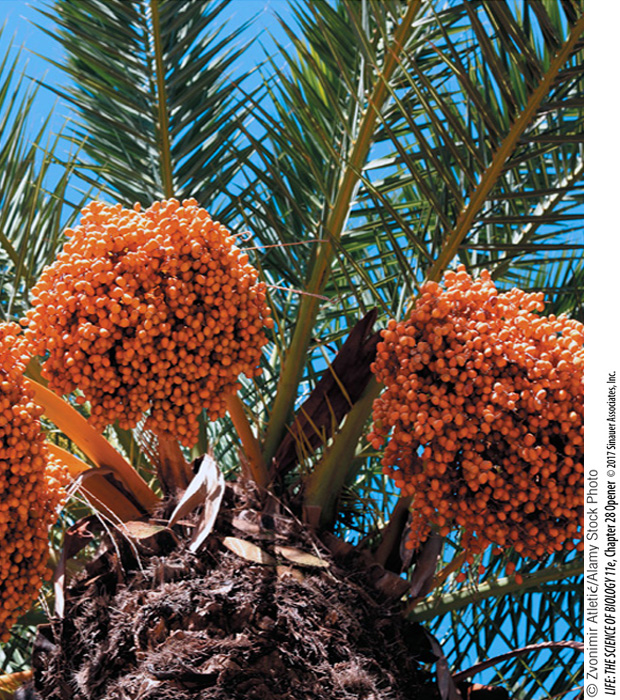Chapter Introduction
The Evolution of
Seed Plants

investigating life
Brought Back from Extinction by a Seed
The Judean date is a fruit that was once much prized, admired for its nutritional and medicinal properties. This fruit was the source of the “honey” in the biblical “land of milk and honey.” Today that ancient strain of date is gone. Or is it?
About 2,000 years ago, a seed developed in a fruit on a Judean date palm. The fruit that contained that seed found its way to a storeroom in the fortress Masada in Judea. In 73 c.e. a band of Jewish zealots involved in a revolt against Rome fled to this refuge with their families and provisions. The fortress was eventually sacked and left in ruins.
Twenty centuries later, archeologists working in Masada discovered the date seed that was long ago stored in the Masada fortress and confirmed its age. The previous record for seed survival and germination was 1,300 years, held by lotus seeds that recently germinated under the care of scientists in China. But botanist Elaine Solowey succeeded in making the 2,000-
Seeds are important structures for the evolutionary survival of plants. Each seed protects an enclosed plant embryo from environmental extremes through what may be a very long and stressful resting period—
So will the resurrected palm serve as the parent of a new population of Judean dates, thus bringing that genotype back from extinction? Unfortunately, it cannot do so alone, because date palms have separate sexes, and the single known individual is a male that can only produce pollen. However, the search is on for other ancient seeds of Judean dates from archeological sites, and it is hoped that one of those will grow into a female plant that can produce new fruit and seeds. Even if a female Judean date seed cannot be found, the male Judean date’s pollen can be used to introduce valuable genes back into other, still living, strains of dates.
How long can most seeds survive, and why is seed dormancy important?